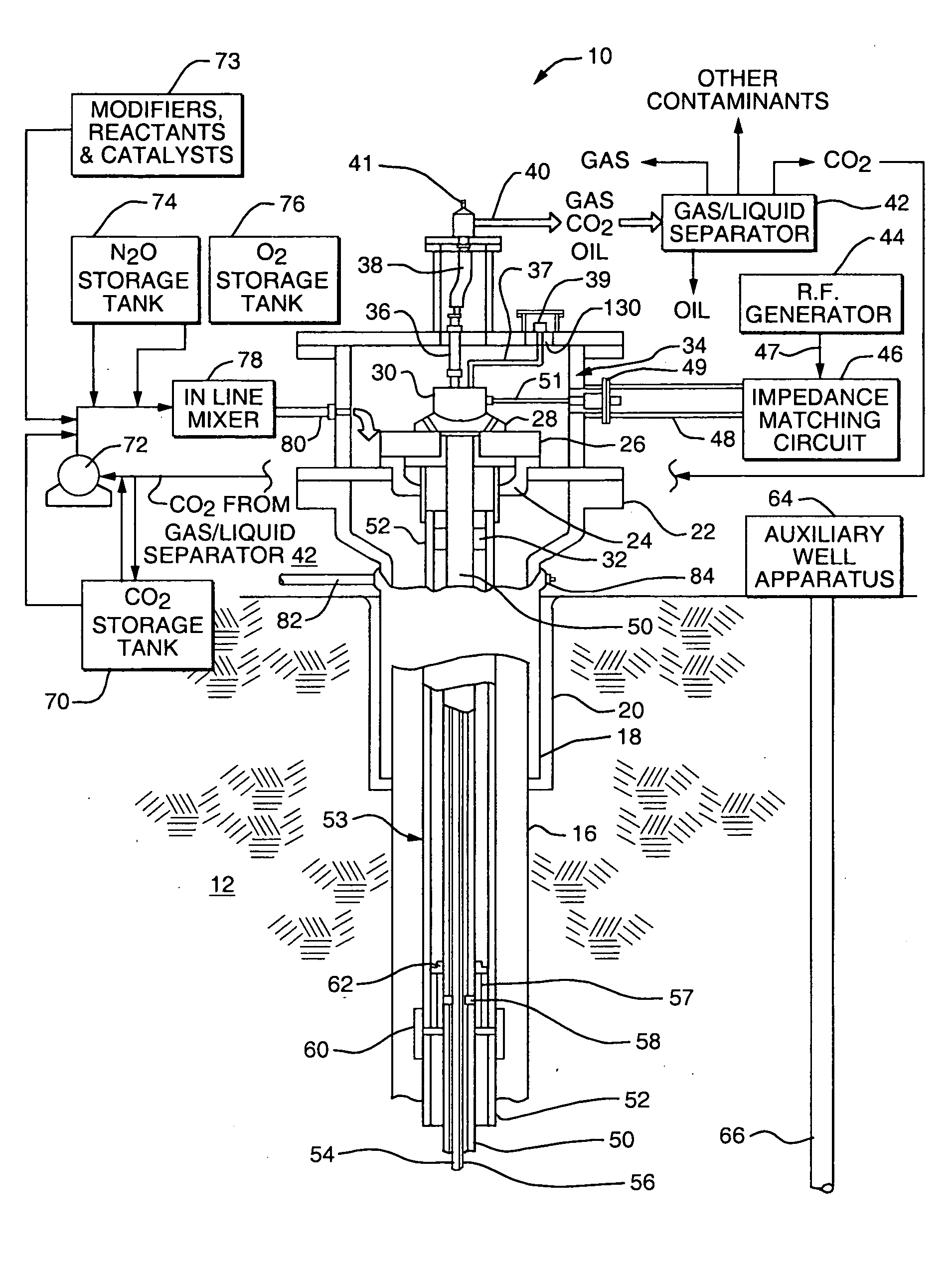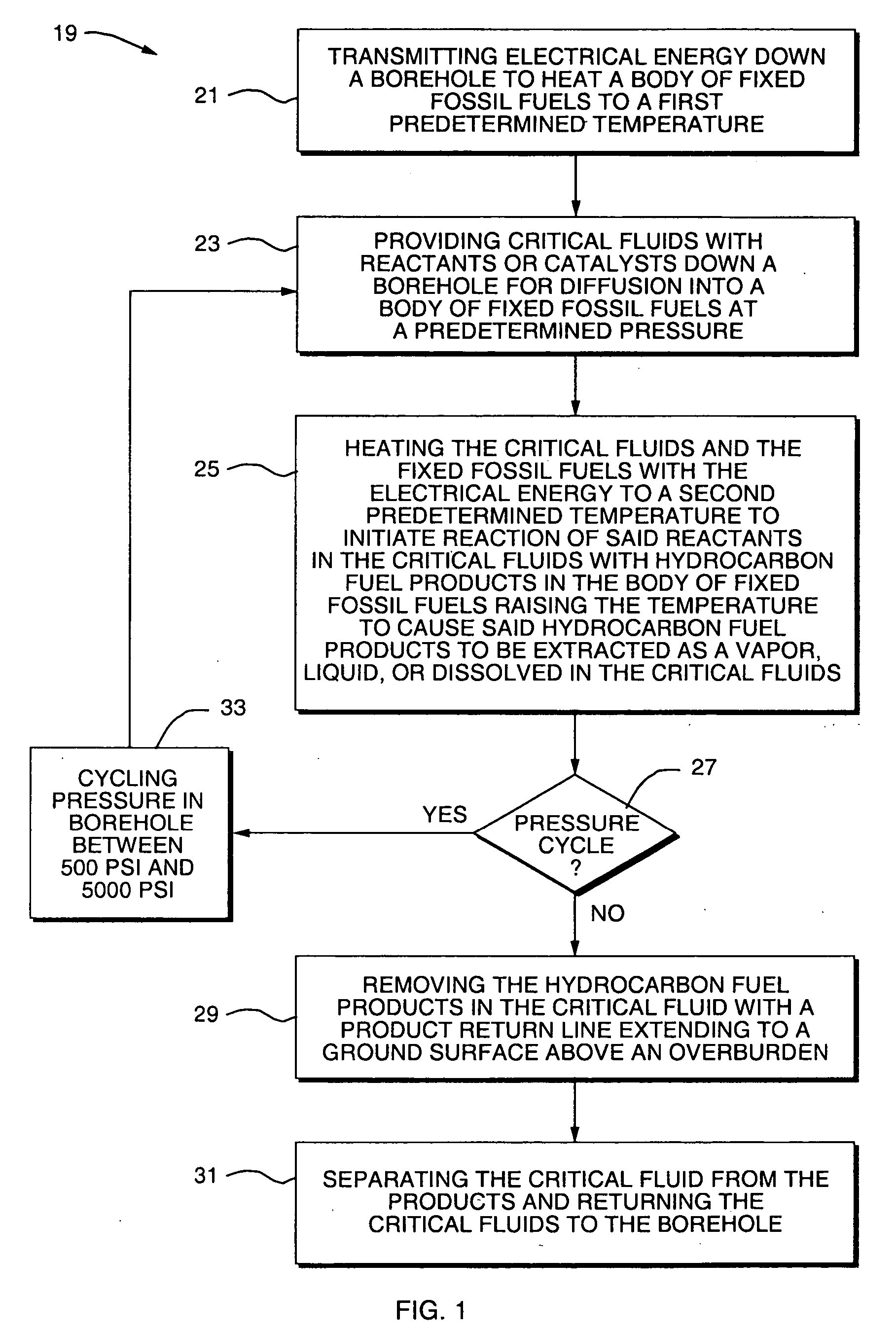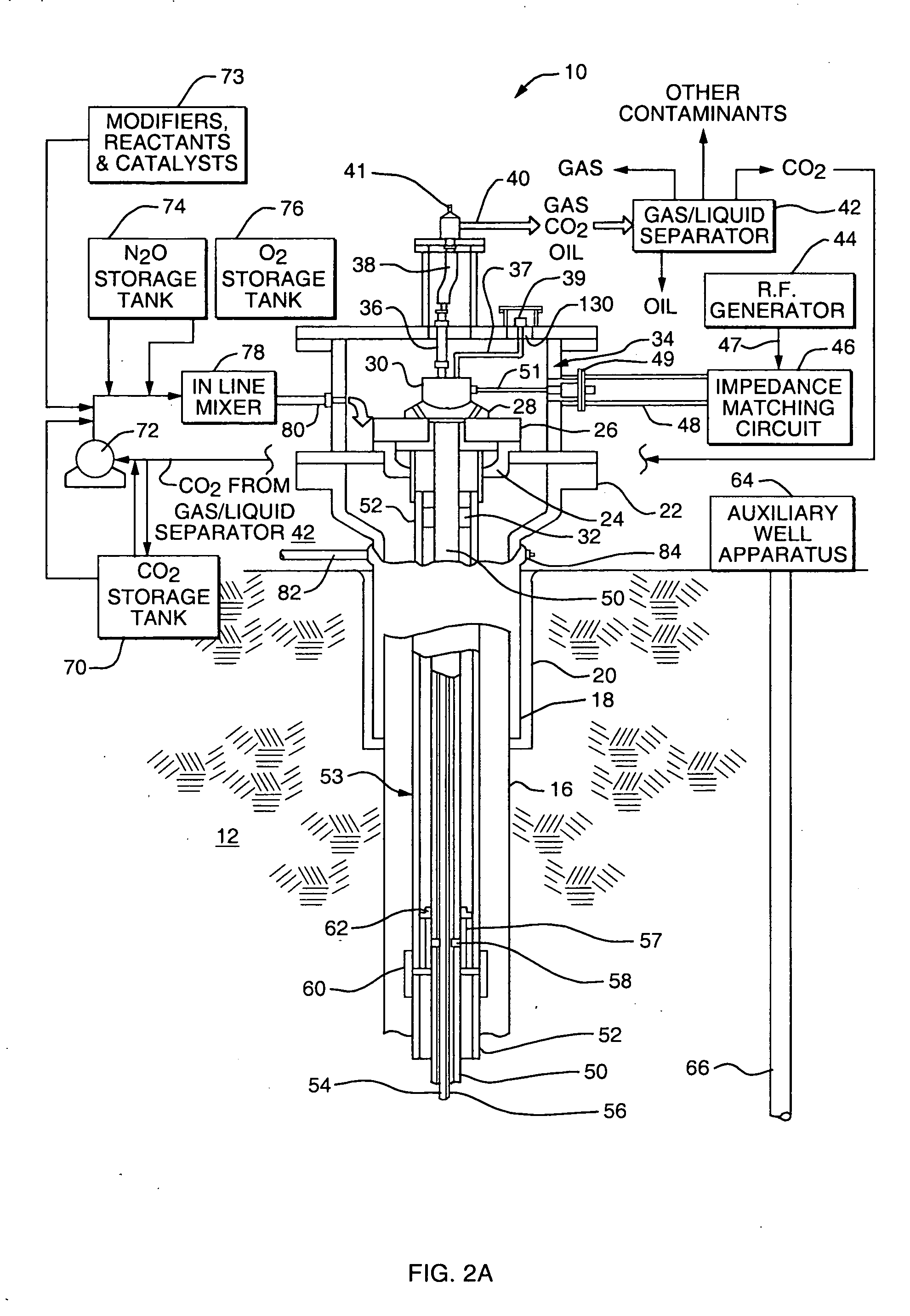Method for extraction of hydrocarbon fuels or contaminants using electrical energy and critical fluids
a hydrocarbon fuel and critical fluid technology, applied in the direction of survey, wellbore/well accessories, insulation, etc., can solve the problems of early attempts to process bodies of oil shale in situ by heating kerogen in oil shale, inability to meet the needs of the environment, so as to achieve the effect of heating oil shale, converting kerogen, and obtaining gaseous
- Summary
- Abstract
- Description
- Claims
- Application Information
AI Technical Summary
Benefits of technology
Problems solved by technology
Method used
Image
Examples
Embodiment Construction
[0045] Referring to FIG. 1, FIG. 2A and FIG. 2B, FIG. 1 shows the steps of a method 19 of producing hydrocarbon fuel products, such as kerogen oil 98 and gas, from a body of fixed fossil fuels, such as oil shale 14, or tar sand beneath an overburden 12, or heavy petroleum from a spent well, or hydrocarbon fuels from coal, lignite or peat. FIGS. 2A and 2B together illustrate a system 10 for accomplishing the method of FIG. 1.
[0046] The method 19 comprises a step 21 of transmitting electrical energy to heat a body of fixed fossil fuels, such as oil shale 14, to a first predetermined temperature such as 150 degrees Celsius to begin the kerogen 98 pyrolysis process, fracturing and modifying of the shale sufficiently to allow the critical fluids to easily penetrate deep into the formation and to reduce the total energy input required in some instances.
[0047] Step 21 is a preheating step to increase the speed of the critical fluid diffusion and depth of the critical fluids penetration i...
PUM
 Login to View More
Login to View More Abstract
Description
Claims
Application Information
 Login to View More
Login to View More - R&D
- Intellectual Property
- Life Sciences
- Materials
- Tech Scout
- Unparalleled Data Quality
- Higher Quality Content
- 60% Fewer Hallucinations
Browse by: Latest US Patents, China's latest patents, Technical Efficacy Thesaurus, Application Domain, Technology Topic, Popular Technical Reports.
© 2025 PatSnap. All rights reserved.Legal|Privacy policy|Modern Slavery Act Transparency Statement|Sitemap|About US| Contact US: help@patsnap.com



